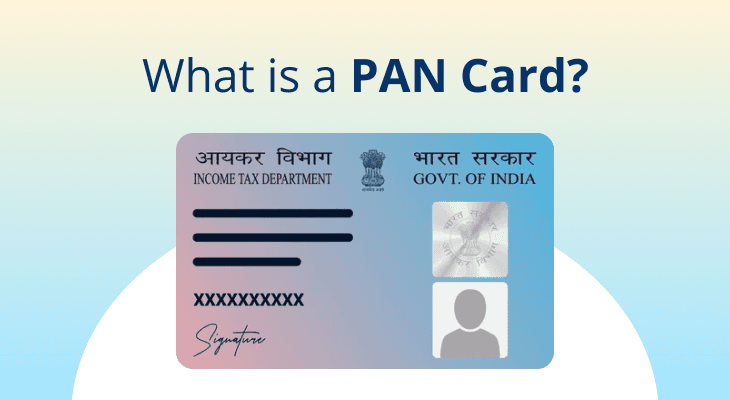
What Is TAN And What Does It Mean?
Permanent Account Number or PAN is a popular identity number in India. Alongside it, there is another important identifier – TAN. This article explains what TAN is, its importance, and how to make a TAN application.
What Is TAN?
Short for Tax Deduction and Collection Account Number, TAN is a unique 10-character alphanumeric code assigned to every individual and entity responsible for deducting or collecting tax at source. Section 203A of the Income Tax Act, 1961, makes it compulsory to quote TAN in all Tax Deducted at Source (TDS) and Tax Collected at Source (TCS) returns.
The first four characters of TAN are letters, of which the first three represent the city or jurisdiction code where the TAN is issued. The fourth character indicates the initial of the individual or entity applying for TAN. This is followed by five system-generated unique numeric digits, and finally, the last character is a letter, also generated by the system.
For instance, a TAN issued in Mumbai for Mehta Associates can look like MUMM12345G.
It is important to note that an individual cannot hold more than one TAN. However, entities are allowed to have separate TANs for different locations, branches, or divisions.
Who Needs TAN?
Every person deducting TDS or collecting TCS needs to make a TAN application. These typically include:
Tax deductors:
- Employers paying salaries
- Tenants paying rents above ₹50,000 per month
- Individuals buying property worth more than ₹50 lakh
- Banks paying interest above the specified limit
Tax collectors:
Sellers of goods such as alcohol, tendu leaves, scrap, metals, and other specified forest produce
Why Should You Apply For TAN – Legal Importance And Compliance
Having a valid TAN is necessary. Here’s why:
- Legal compliance: Obtaining a TAN ensures compliance with the Income Tax laws.
- Avoiding penalties: Non-compliance with TAN requirements leads to fines and penalties.
- Transparency: Financial transactions become more transparent because of TAN, as it fully discloses the identity of the parties involved.
- Smooth operations: For businesses, having a TAN adds credibility and facilitates smoother transactions.
- Efficient tax tracking: TAN enables the government to reconcile taxes more efficiently.
Also Read: TDS vs TCS: Key Differences, Meaning & Tax Implications
How To Apply For TAN
There are two ways to make a TAN application:
Online Method
Step 1: Visit the official NSDL-TIN website (https://tin.tin.nsdl.com/tan/index.html) and select ‘Online application for TAN (Form 49B)’.
Step 2: Choose the deductor category and fill in details such as name, address, and TDS/TCS information.
Step 3: Attach necessary documents, such as proof of identity and address.
Step 4: Pay the application fee (₹65 + GST = ₹77).
Offline Method
Step 1: Visit the nearest TIN facilitation centre (TIN-FC) and obtain Form 49B.
Step 2: Fill the form, attach the required documents, and pay the ₹77 fee.
Once the form is reviewed and approved by the tax department, TAN will be sent to your registered address. Applicants who apply online will also receive an email confirmation.
How To Check TAN Application Status And Retrieve Details
You can track your TAN application status in two ways:
Using the acknowledgement number
Visit Protean TAN services (https://www.protean-tinpan.com/services/tan/tan-introduction.html), enter your acknowledgement number, and submit the request.
Using the transaction number
Go to https://tin.tin.nsdl.com/tan/changemode.html, enter your transaction number, and submit the request.
To retrieve your TAN details, you can use the ‘Know TAN details’ feature on the official Income Tax portal. Search by using your name (or TAN, if remembered) under the TAN search menu. After entering the required details, provide your registered mobile number. A One-Time Password (OTP) will be sent to this number, and once validated, your TAN details will be displayed.
Conclusion
TAN is a crucial 10-character identity number for businesses and individuals dealing with TCS or TDS. Making a TAN application on time ensures compliance, avoids penalties, and facilitates smoother transactions.
FAQ
How is the TAN number structured?
TAN has 10 characters:
- First 3: City code
- 4th: Initial of applicant’s name
- Next 5: Unique number
10th: Alphabet character
How can I retrieve or verify my TAN details?
You can retrieve or verify your TAN details by visiting the official income tax portal and using the ‘Know TAN details’ feature.
Can PAN be used instead of TAN in any scenario?
No, PAN and TAN serve different purposes. They cannot be used interchangeably.
What’s the difference between TAN and PAN?
PAN is a unique 10-digit alphanumeric code assigned to taxpayers. It serves as proof of identity and can be used for a wide range of purposes, such as opening a bank account or applying for a passport.
TAN, on the other hand, is specifically used for transactions related to TCS and TDS.
What penalty applies for an incorrect or missing TAN?
A penalty of ₹10,000 is imposed for not quoting TAN or for quoting an incorrect TAN.


